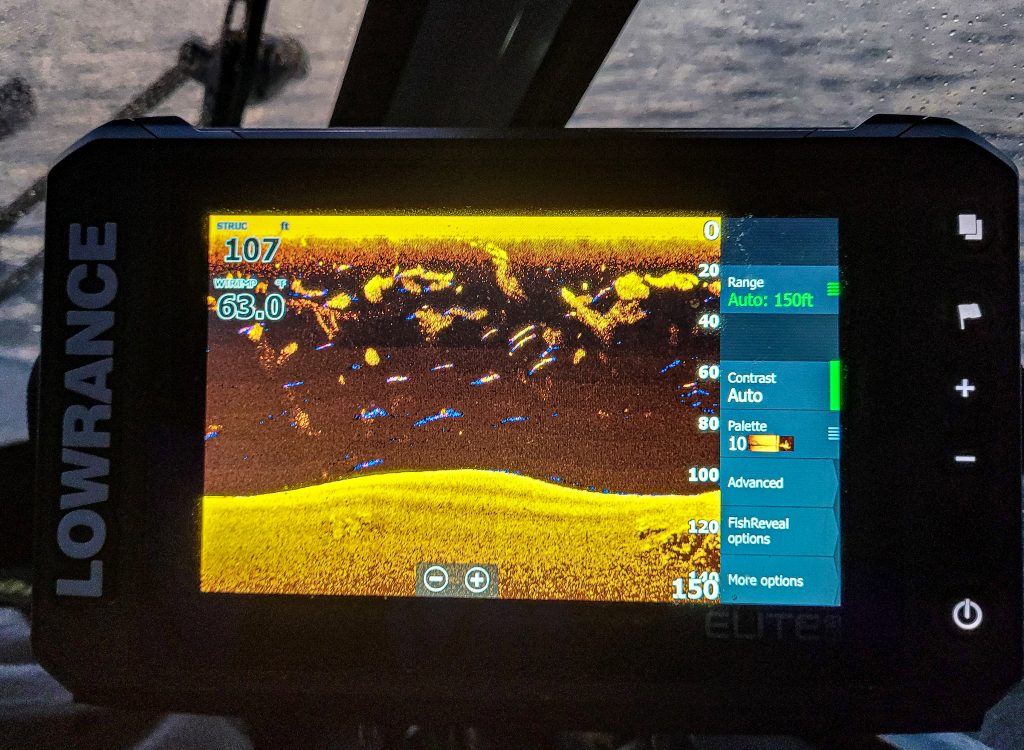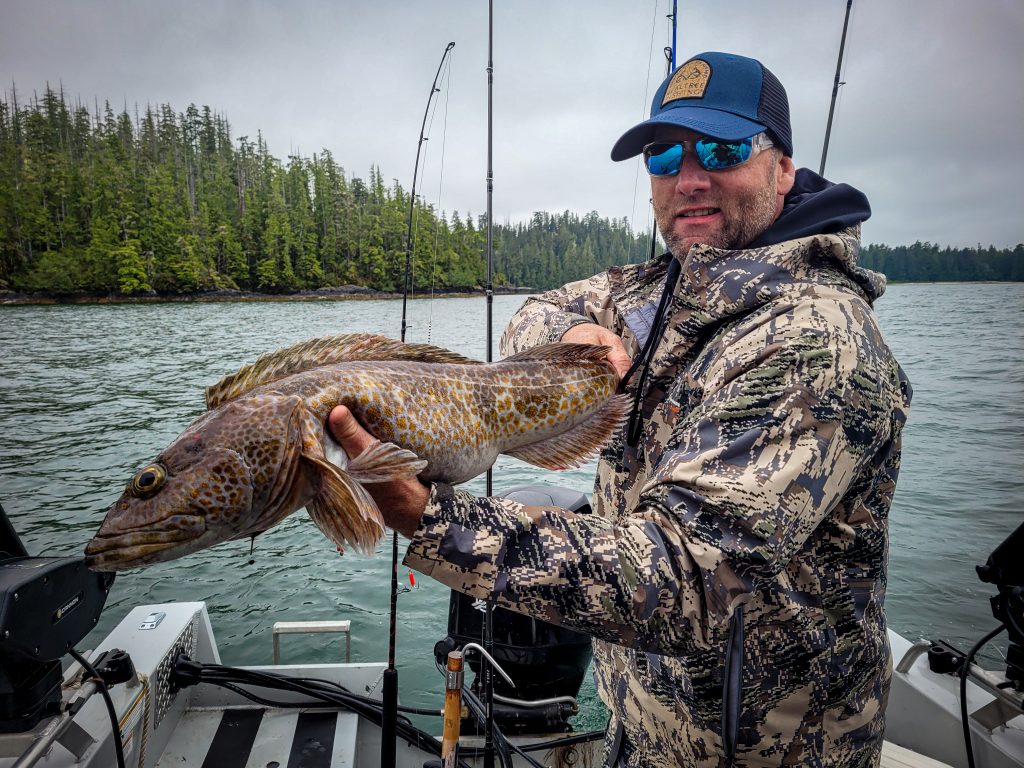Return to Nootka! Leave a reply

Return to Nootka Sound!
By Jason Brooks
Finally after a few years of border closures anglers can finally make the trek back up north to fish Canadian waters. The salmon that feed here are a mix of U.S. bound stocks and local Canadian run fish which means plentiful opportunities to catch fish and enjoy some incredible scenery. When it comes to fishing Nootka Sound there are two primary types of water. The first being offshore out in the open Pacific and the second is the inshore fishing targeting the various inlets and rocky reefs along the coastline.
Last month we found ourselves up in the Esperanza Inlet which is on the northern end of Nootka Island. Most anglers head south to the main Nootka Sound and Moucha Bay area but either offer similar fishing conditions. As much as we wanted to make it out to the open ocean where you can find big schools of migrating chinook, coho chasing bait balls and deep water lingcod it just wasn’t going to happen for us on this trip. The first time we headed out past the marker buoys the wind kicked up and blew us around a bit and the waves made it hard to get the gear down. The next day was flat calm but the fog rolled in and visibility was around 50 to 100 feet. With no radar on the boat it was obvious the flat ocean would not be an option. The third and last time we tried we were met with large rollers and all agreed this is a vacation and not worth the Dramamine. So we had to adjust and find the inside fish. Here is how we did it.

Fish the points and know the tides.
Most of the fish we were now targeting were heading back to the Conuma River hatchery in Thasis, B.C. As salmon make their way from the open ocean they tend to use land breaks to travel along. Still actively feeding the salmon will push bait up against the deep rock walls where they become easy targets with nowhere to go. But it is the points that are most predictable. When you see a point jutting out into the water it is only a matter of time before you find the fish. These points create tidewater breaks and this far north means big tides.
On the incoming tide fish the inside of the point as bait is pushed to the softer side and will congregate there. This is often very shallow water fishing and lots of eel grass and kelp. We worked just off the kelp beds and found large chinook gorging on baitfish in 40 feet of water. Making for a fun time when the “Spring” (Canadian term for chinook) grabs the line and has nowhere to go. For the outgoing tide fish the outside of the point, where again the baitfish will be pushed. This is often deeper water and larger bait balls with more room to roam. Keep an eye on the sonar unit and once you find the bait be sure to work through it several times. When the tides are “resting” such as one hour before and after tide change then be sure to troll right off of the point as baitfish often stack up here.

Don’t set it and forget it.
Back at the dock and fish cleaning table we got to chatting with other anglers. Most were secretive until we started emptying our fish box onto the table. Tossing up 6 chinook and a coho by mid-morning to fillet and freeze, the neighboring anglers began to wonder how we did it. Simply put I told them that we trolled a certain well-known point. The next day we went back out there, and all of those anglers joined us, but I immediately noticed something they did differently. As we worked tight circles and around bait the other boats set a line and trolled along it, for miles. We watched them until they went of sight and a few hours later came back trolling by the other way. Back at the fish cleaning station later that day I just had to ask where they went. Turns out they thought that since the fish were at a certain depth along the “shoreline” that they would just keep trolling along and catch fish. They caught two. There is a saying I like to use, “don’t leave fish to find fish”. Once you find the bait stacked up, keep fishing it as the chinook are migrating to their home rivers and will come by and gorge on the baitfish.

Work the kelp line.
When we trolled along the shore, we noted that a lot of baitfish were jumping in the kelp. It is impossible to troll in the actual kelp itself but by trolling just outside of the kelp we picked up several fish. This is how we caught most of our coho which were inside the kelp and saw our flashers which enticed them to see what was going on and then bit our lures. Every fish we kept we made sure to check what they were eating and all of them had juvenile baitfish, about 2 inches long. It is really hard to cut plug a 2-inch herring so we used artificial lures, mostly small spoons such as Coho Killers and Coyote Spoons in the sardine pattern but also the Brad’s mini-cut plugs, and Yakima Bait SpinFish, all doused heavily with Pro-Cure Super Gel in anchovy or herring. We did have a UV blue spatter (Silver Horde Gold Star 8144 OG144R) squid skirt (hoochie) trailing behind a Macks Lure Scentflash UV paddle flasher that produced two of our three biggest fish but the smaller presentations were bit more often.

Don’t forget the bottom fish.
Even on the inside you will find good numbers of rockfish, especially canary and copper rockfish. Lingcod are also found in the calmer waters along the rocky ledges but for the larger lings and halibut most anglers head offshore a few miles to the many rock reefs and pinnacles. When the salmon fishing gets slow look for stacked up rockfish and drop a jig. It won’t take long before you have enough for a shore lunch or to take home for a fish fry.

Enjoy the scenery and make it a vacation.
Nootka is a special place where the “average” angler can go and catch fish. It is nice to head to the many lodges in the area but there are also campgrounds and even houses for rent for the weekend. Any boat that you can fish in Puget Sound will work up in Nootka as long as you know your limitations. Offshore offers way more in terms of numbers of fish and variety, such as halibut, but those with smaller boats will still have plenty of places to catch fish. Eagles sit in the tall trees, otters splash around and bears wander the shoreline. There is a lot to see and do up in Nootka and it is a great place to take a family for vacation. With a lot of history in the area there is something for everyone up there, from kayaking the calm inside waters, beach combing or bird watching but it is the fishing that will have you keep going back.
Jason Brooks
The Outdoor Line Field Editor

